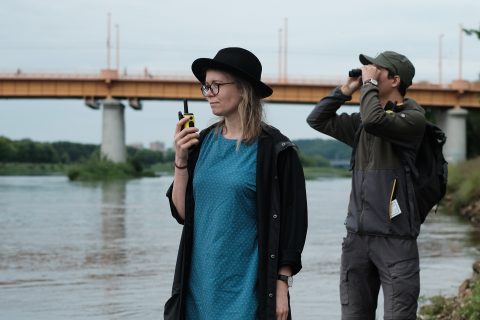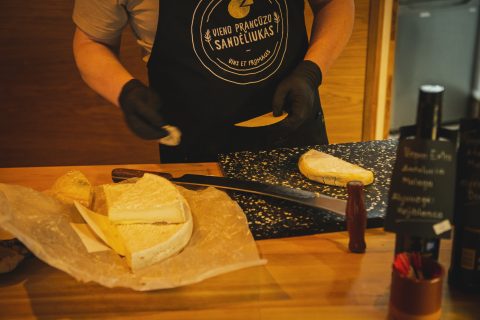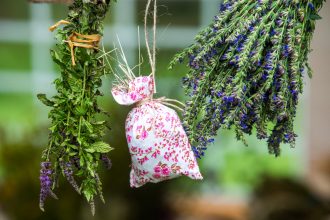I was worried whether I would be able to catch Linas Daubaras for an interview, after all, the tourism season is in full swing, and the president of the Lithuanian Guides Union is especially popular among those who want to not just take a walk around our city, but also to learn more about various stages of history and architecture. I caught him, to my surprise, not welcoming a group of tourists, but doing an internship in Germany, deepening his knowledge of nature therapy.
It can also be called forest therapy or even forest bathing: this is how the Japanese term Shinrin-Yoku translates. “Leave your phone and problems at home – immerse yourself in the forest,” people are invited in a rather romantic manner to take care of their physical and psychological well-being. It is possible to move about on your own, but it is much more effective with a guide.
I heard about this therapy for the first time after the publishing house Dvi Tylos published the Japanese immunologist Dr. Qing Li’s book, which is called Forest Bathing. It was translated into Lithuanian by the first certified forest therapy guide in Lithuania Mila Monk and Rasa Monkevičienė. Later, Aistė Virketė, the founder of the shelter for plants told us some more about this topic. This winter, I read that Linas Daubaras was elected president of the newly established Lithuanian Nature Therapy Association. So now we have an opportunity to talk about other things than stories that surround Kaunas buildings.
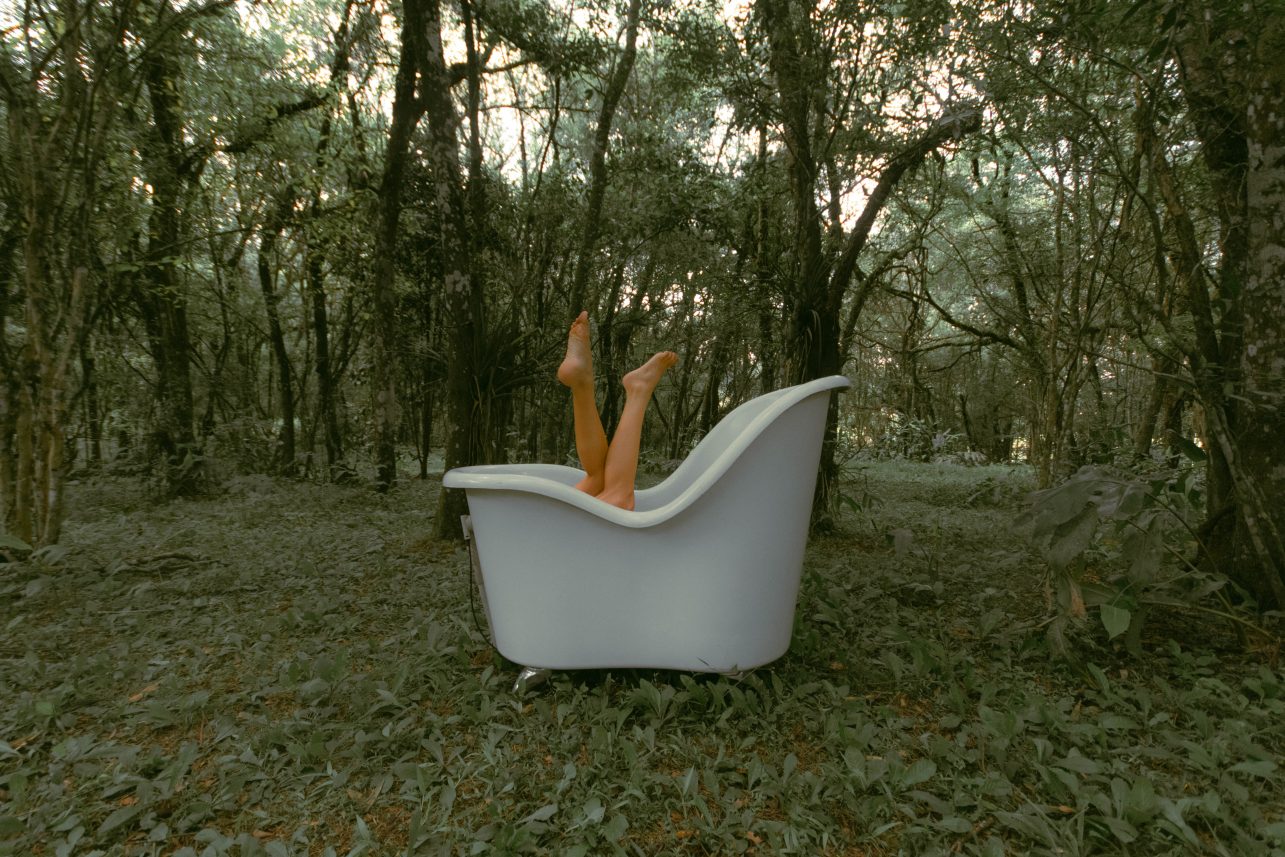
Linas, you are a well-known Kaunas guide, how did you decide to become a forest therapist as well?
I am a forester by education. Yes, I do talk about modernism and history, but I have studied forestry. In 1985, I wrote my thesis called “Utilization of Landscape Reserve for Natural Tourism.” When the pandemic started, when there was no serious tourism, I started thinking about what else interested me. And I remembered.
Forest therapy is relatively new to the world outside of Japan. It started in Japan a few decades ago but everywhere else, it started to trend only now. That is because most of the world has moved into skyscrapers and lost touch with nature. Everyone saw that it was not good without it. In Lithuania, we still have nature, but you can see for yourself what is happening: apartment buildings are springing up in both Vilnius and Kaunas.
I found one of the most serious global organizations – the International Nature and Forest Therapy Alliance, registered in Germany and Australia. I got acquainted with it and wondered what I was missing. Nature therapy can be said to consist of three major parts: forestry, medicine and tourism. I think I am pretty good in forestry and tourism, but not so much in medicine. Since I know doctors from academic circles, I proposed this idea to the vice-rector of the Lithuanian University of Health Sciences (LSMU) and within five minutes it was decided that it was very interesting and unheard of in Lithuania. Four months ago, we founded the Lithuanian Nature Therapy Association. On September 11, LSMU is starting a postgraduate 480-hour study program in nature therapy. I am very happy about this, although my merit here is small, the biggest praise must go to LSMU. Most of the program participants are doctors, medical specialists, but there will be other people as well. And we hope that it will help doctors, and through doctors, everyone else.
after sucking city air into a balloon and bringing it to the juniper forest, phytoncides kill all microbes within five minutes.
How many association members do you already have?
About fifteen. The majority are doctors, also a few foresters, several professors from other fields and landscape architects.
You mentioned that you were pushed into a new area by the pandemic and the lack of real guidance. What about others, such as medical professionals? After all, they have all kinds of medicines, devices, they can treat people without the help of nature.
I am not a doctor, but we all know that it is better to prevent diseases than to cure them. Nature therapy is preventative. The effect is not the same as taking a very potent pill, but it is scientifically based and proven. For now, we are not conducting research in Lithuania, but I hope we will in the future. For example, the Germans have just completed some studies, which show that, in terms of various changes in blood pressure, heart rate, blood composition, various hormones, it works very well. Why not utilize that?
Many people who have contracted Covid still suffer from shortness of breath, loss of sense of smell, and fatigue. Perhaps the growing popularity of nature therapy is determined by that?
This question should be addressed to real doctors. But yesterday, I conducted a three-hour trial therapy session here in Germany. And actually, there were people, who had had Covid, and they enjoyed the session a lot and felt good. Of course, in order to make an accurate assessment, very detailed measurements should be made.
And what about psychological well-being?
Being in the forest contributes to it. Skeptics say: why do I need a therapy guide; I can go to the forest myself. Actually, yes, if you go to the forest to hunt, the effect will be slightly different. Forest therapy is a kind of system: first relaxation, then breathing exercises, then concentration. Works fantastic for me.
A lot of research conducted worldwide show that spending two hours in a coniferous forest (where the effect is the greatest) does the following: if your pressure is too high, the effect of the forest lowers it, and if it was too low, it raises it. No single pill will do this. You will take a pill for either high blood pressure or low blood pressure. And when you come to the forest, your blood pressure normalizes.
You mentioned conifers. Does that mean I couldn’t take part in forest therapy session in Ąžuolynas (oak grove)?
You could. And here we move to smells. The majority of plants emit the so-called phytoncides. These are biologically active substances that kill or inhibit the growth of bacteria, parasites and fungi. Phytoncide is more of a biological name, from a chemical point of view we would be talking about terpenes. There are up to 10 thousand of these compounds. In Lithuanian conditions, one hectare of pine forest emits approximately 5 kg of phytoncides per day. It’s an airborne gas and 5 kg of molecules is a huge amount. And juniper trees, which we don’t have a lot of, emit as much as 30 kg per day. By visiting Kadagių slėnis (juniper valley) you not only enjoy a beautiful view but go through treatment without knowing it. Garlic, onion and horseradish have phytoncides, as well as oak trees, but in these conditions, pine and juniper forests emit the largest quantities of them.
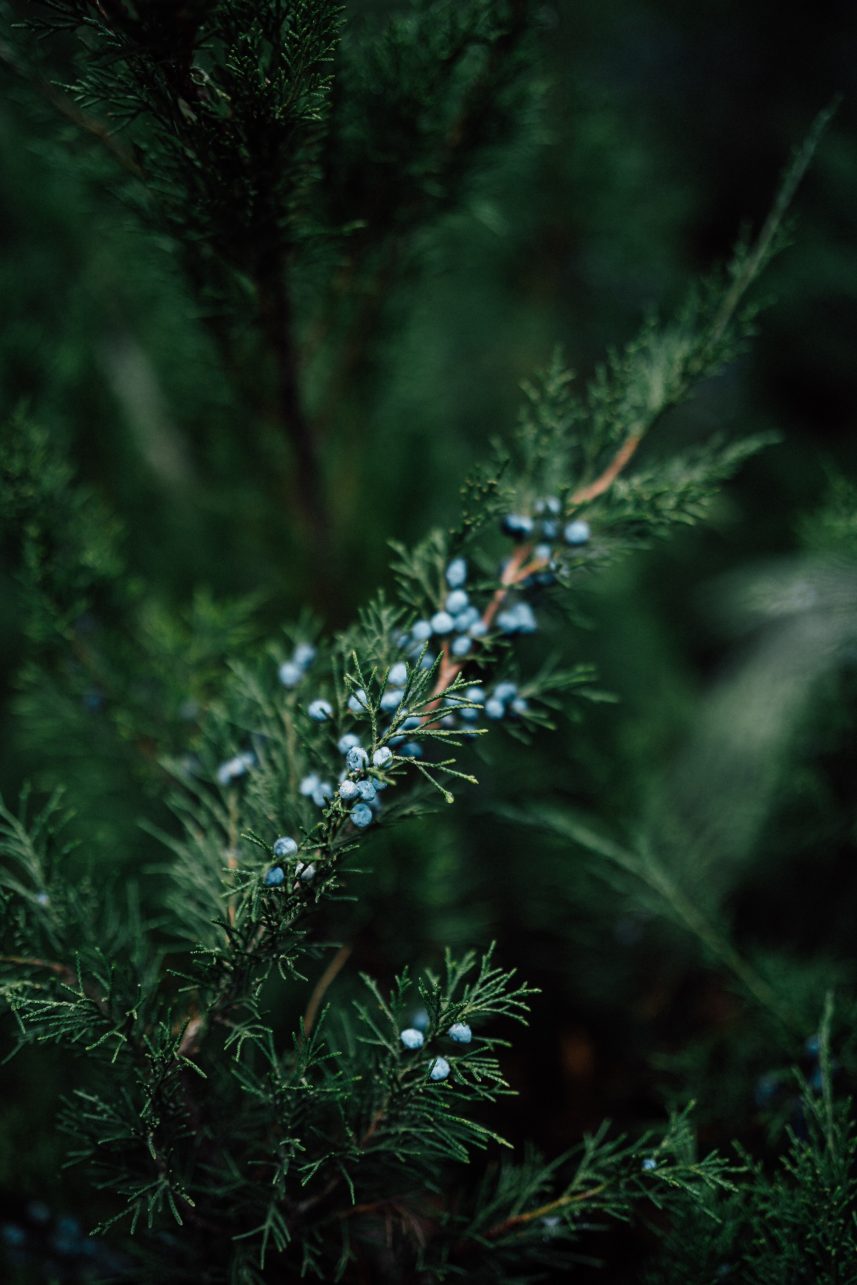
I wanted to ask about specific places in Kaunas. Where can you get this therapy?
I won’t give it away yet, because I am preparing a route, which I have inspected and crossed many times, it was a lot of work. The route will be near Kaunas College of Forestry and Environmental Engineering in Girionys. It is perfect due to the terrain and the weather, it is easy to get there by car, public transport, bicycle. In the summer I will be doing educational walks that I will have to film and send to Australia. And in the fall, I will start public walks. You see, through my serious approach to work, I stumbled upon the most serious organization. There are organizations in the world where you listen to a 10-hour-long material, they send you a certificate and, wish you good luck at work. That’s not the case here, I’ve been friends with them since last September. You have to do a lot of testing, send the documented activities, then they comment, then you try with a larger group of people. Then you go through all the first aid, food safety classes, etc. because the last stage in forest therapy is tea drinking. You can pick your own on the way, if you know the plants, or you can bring your own to be safe: you won’t pick the wrong leaf, and nobody gets poisoned. You need to learn that too, so there’s work to do.
Can the tea be any kind or is there a specific recipe?
There is no specific recipe. It should be tea from nature. It’s best if it’s not from Ceylon or somewhere else. It should be from Lithuanian plants. It can be lime flowers, blackcurrant leaves, mint…
Is it possible to do nature therapy in winter?
It is possible, but since plant vegetation does not take place in winter, you will only catch one or two phytoncides, so it will not really have such an effect on you. They are a product of vital activity, with which plants protect themselves from pests. It is estimated that after sucking city air into a balloon and bringing it to the juniper forest, phytoncides kill all microbes within five minutes. And in winter, since there are no pests, the plants are also asleep.
I understand that when you come to forest therapy, the first thing you need to do is to learn how to breathe in order to get the most out of it.
Not just breathing, all five senses need to be activated. We do not emphasize one correct way of breathing. It’s important to calm down, turn off your phones, forget your worries and start feeling. First, you need to see, then after you close your eyes, you start hearing better, smelling better. After that comes the touch. We try not to emphasize the taste too much, so that people accidentally don’t eat something they shouldn’t. So, nothing specific, you just need to feel that your body is starting to relax. One of the exercises in that sequence is the tuning of the senses.
And after you immerse yourself in the forest, do you think you will still find time to conduct tours about Kaunas modernism?
With time, it’s like this: at the moment, cyclists – which whom I was supposed to begin the tour – are already starting it in Vilnius. Tomorrow, my colleague will start and later I will join also. But what can I say: I like what I like.

